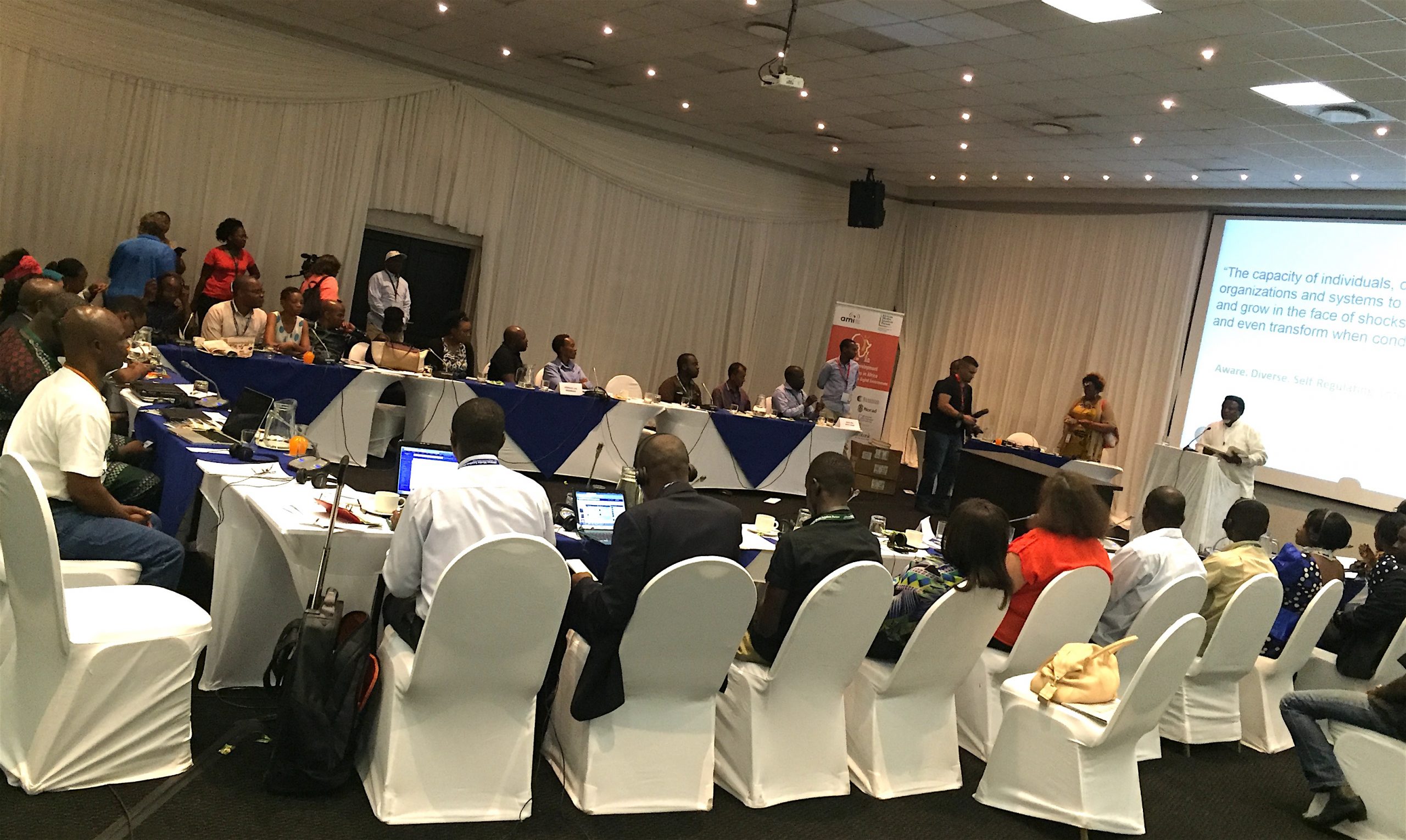- Have any questions?
- +254 718 619298
- thinking@developlocal.org
Data Forum For Sustainable Development in Kenya
25th September 2015Building Developmental States in Africa: Data as a Means of Implementation
26th November 2015
Participants at a workshop on Resilience organised by African Media Initiative with support from Rockefeller Foundation
It was the winter of 1997-1998 when the granddaddy of El Niños — the one by which all other El Niños are judged — vaulted this name, now a common term associated with climate change, to household name status. In Kenya, El Niño led to the closure of schools, wide scale flooding, displacement of people and unfortunately, death. In the Far East in 2011, a tsunami dealt a catastrophic blow to Japan leaving massive destruction in its wake, and a staggering 18,000 people dead with thousands displaced. Besides crippling the nuclear industry, Japan’s colossal economic setback was reported to be $360 billion!
Disasters of varying magnitudes occur almost every year around the world with their effects becoming an increasingly greater global concern for governments. In Africa, natural disasters are increasing in number and frequency with obvious adverse impact on people. Disaster events have substantially increased the economic loss of poor communities – so much so that the impact of disasters on the African continent has had a negative impact on sustainable development (Africa Union: 2006).
Disaster risk reduction is a multi-disciplinary issue cutting across a State’s vital aspects such as peace & security, health, transport, agriculture and climate change. Extreme weather conditions such as floods and droughts lead to rapid spread of diseases such as cholera and malaria, render school and training facilities inaccessible therefore impeding education and learning and damage telecommunication and transport infrastructure.
The nexus between disaster risk reduction and sustainable development was embedded in the drafting and formulation process of the Sustainable Development Goals (SDG’s) ultimately incorporated as goal 11 [make cities and human settlements, inclusive, safe, resilient and sustainable] and Goal 13 [take urgent action to combat climate change and its impact].
The Sendai Framework for Disaster Risk Reduction 2015-2030 was adopted by UN Member States on 18 March 2015 at the Third UN World Conference on Disaster Risk Reduction in Sendai City, Miyagi Prefecture, Japan. The Sendai Framework was the first major agreement of the post-2015 development agenda to be adopted with seven targets and four priorities for action. With frameworks like the Sendai Framework drafted and adopted and goals mapped out, how then do we ensure that disaster risk does not impede implementation and positive impact of Africa’s development goals?
Legal instruments forge a strategic framework through which Disaster Risk Reduction and Resilience can be realized. However, there is also a growing importance and understanding that data collection, analysis, and management can help both short and long-term development goals and help to identify and address disaster risks.
- How do we identify, assess, and monitor disaster risk?
- Is there data available to state and non-state actors to aid in decision making for reduction of underlying risk factors?
- Are we able to assess preparedness for effective response and recovery?
- How do we facilitate the open exchange and dissemination of disaggregated data, including by sex, age and disability, as well as easily accessible, up-to-date, comprehensible, empirical, non-sensitive risk information complemented by traditional knowledge?
- Considering the multi-disciplinary nature of disaster risk, how do we perforate existing silos that lock in existing data and instead ensure that this data is shared and made accessible to those in need of it?
The availability of data will enhance capacity building for disaster risk reduction through the transfer of knowledge, technology and expertise. The sharing of research findings, lessons learned and best practices will create awareness on matters pertaining to disaster risk reduction and resilience and increase preparedness for effective disaster response and recovery; the compilation of information on disaster risk and impact for all scales of disasters will inform sustainable development and disaster risk reduction.
The capability of the continent to deliver on its development agenda lies in its ability to collect, analyse and share the data that is required to plan and monitor disaster risk reduction and resilience.
“Access to information is critical to successful disaster risk management. You cannot manage what you cannot measure.”
Margareta Wahlström, United Nations Special Representative of the Secretary-General for Disaster Risk Reduction


